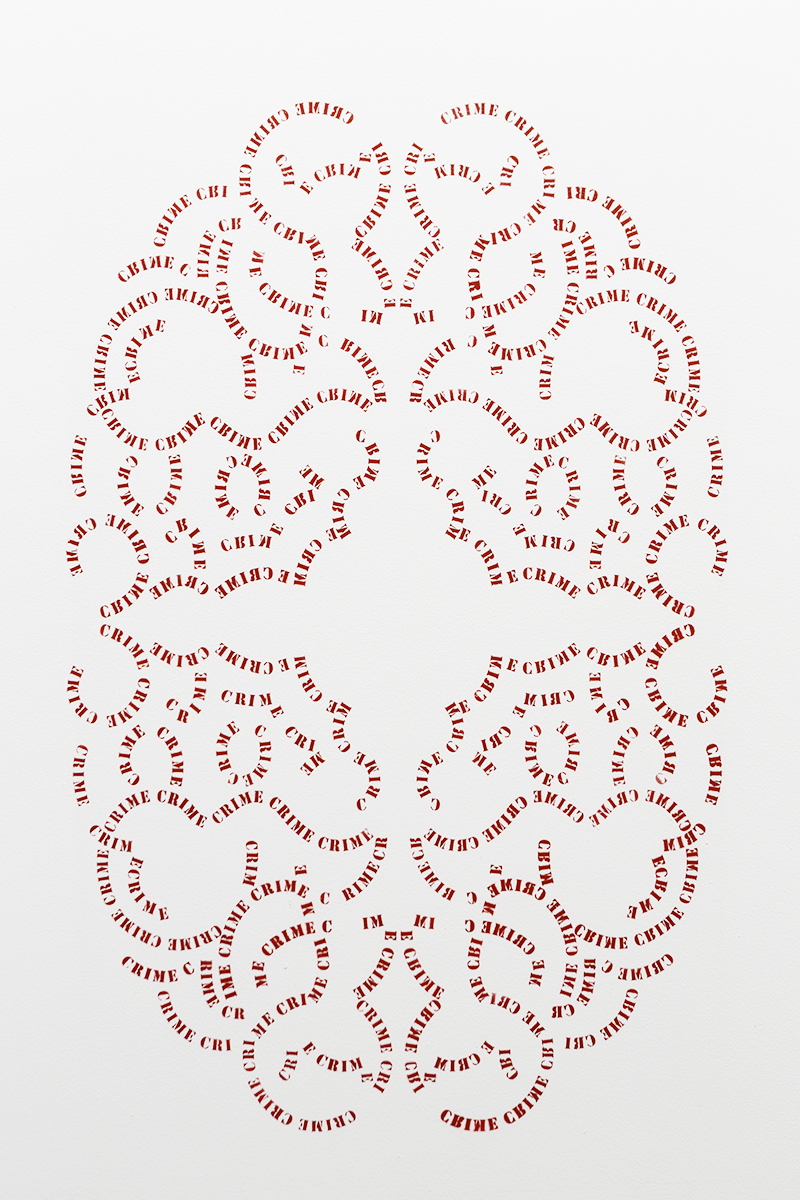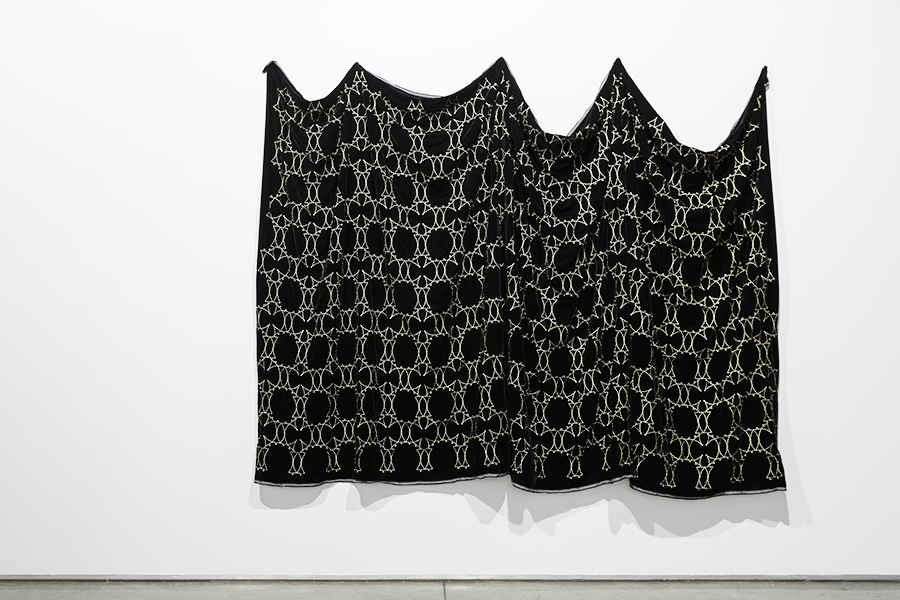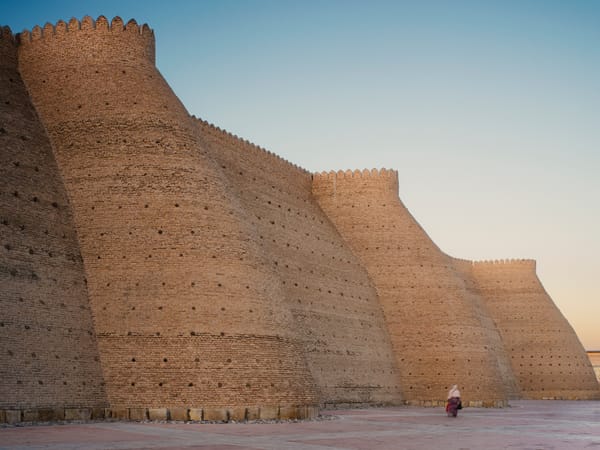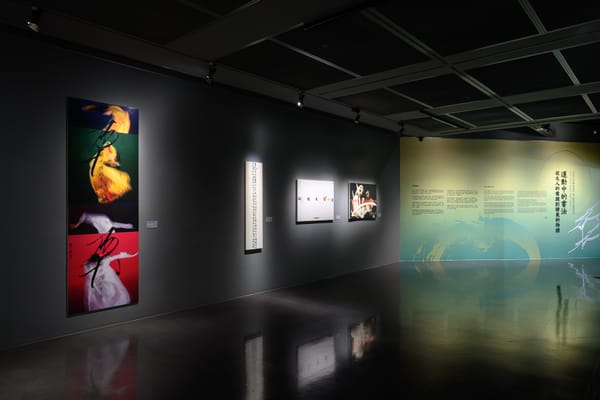Shows
Zoulikha Bouabdellah’s “Double Truth”


In the heart of Dubai’s Alserkal Avenue arts complex, Gallery Isabelle Van Den Eynde is currently exhibiting Moscow-born, French-Algerian artist Zoulikha Bouabdellah’s “Double Truth.” Ten pieces created between 2003 and 2015 are spread across the vast warehouse gallery for the artist’s third show in the United Arab Emirates.
Taking its title from Islamic philosopher Ibn Rushd’s “Double Truth” theory, Bouabdellah’s show explores the concept of truth—whether it is derived through religion or philosophy, and how different versions can coexist. Most evident of this examination is the artist’s infamous Silence (2008–15). The installation consists of 10-stenciled rectangles in the shape of prayer mats, neatly and closely aligned as if laid out for use, each with a glittering, jeweled pair of high-heeled women’s shoes in its center. By joining the two seemingly contradictory objects, Bouabdellah questions why it is necessary for humans to define what is sacred and what is blasphemous, exposing how, as inverses, one cannot exist without the other.

In January, a 2007–08 iteration of Silence caused controversy in France when Bouabdellah willingly removed it from an exhibition at the Pavillon Vendôme, in the suburbs of Paris, in reaction to warnings from the town council that it could cause conflict, even violence, after complaints were made regarding the content. Other exhibiting artists followed suit, in solidarity as well as protest of the self-censorship, which took place only weeks after the Charlie Hebdo murders. As a result, the exhibition was dismantled prematurely.
Crime and Ornement (2015) is installed on the back wall of the gallery, covering the majority of the wall with repeated red-stenciled paint patterns reminiscent of architectural embellishment. Up close, viewers find that one recurring word makes up the ornate circular pattern: “CRIME.” Here, Bouabdellah embraces the decoration, an act that Gallery Isabelle Van Den Eynde aptly points out would have appalled the Austrian theorist Adolf Loos (1870–1933), whose lecture “Ornament and Crime” labeled ornamentation a disease, an epidemic in culture and a deed done by “degenerates. Loos states that civilization had passed the point of decoration—that anything but the necessary was a waste, frivolous and uninventive. Within “Double Truth,” Bouabdellah uses ornamentation as a distraction, hiding dark realities among the adornment, demonstrating that life is intricate layered with various “truths.”
In the gallery’s main space, visitors are confronted by Mobile (2014). The large metal hanging structure resembles a cluster of razor blades dangling from the ceiling. A heavy fixture, yet delicately composed, it evokes a sinister tone with suspended panels whose cut-outs evoke the spires and minarets of religious buildings, mosques and churches—suggesting a balancing act of religions.


At first glance, another piece, Mirage Graphic (2014), is predominantly decorative. Gold thread is embroidered on hanging black velvet spanning more than four meters. Repetitive shapes merge together to create a pattern. But, upon closer inspection, fighter jets appear embedded in the design. The aircraft are disguised, a mirage in the work, just as in reality they sometimes evade our perception, obscured in the sky. Bouabdellah repurposes the menacing planes, creating ornamental patterns suggestive of traditional Arabic design motifs, which have been overshadowed by destruction and turmoil in the Middle East—not far from where the Morocco-based artist lives and works. Yet the draped piece allows a sense of beauty within this devastation, reminding viewers that culture must not be forgotten.
Ornamentation distracts from cruel realities but also permits beauty in the darkest places. Bouabdellah defies Adolf Loos’s theory that decoration is a disease from a by-gone era, proving that ornamentation is still essential to humanity. Impactful, and abundant with symbolic imagery and messages, “Double Truth” reveals there are various realities co-existing in every situation.
“Double Truth” is on view at Gallery Isabelle Van Den Eynde, Dubai, until July 25, 2015.







